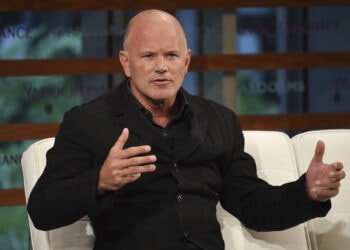Markets, and the stocks that comprise them, are barometers of investor expectations. We all invest in stocks based on the future earnings power of a company and the price of the stock (or an index) is simply a discounting method for those future earnings. When investors expectations increase, so do prices. The corollary is also true.
Sometimes these expectations are priced in immediately. For example, on Oct. 4th, when investors decided that Elon Musk would most likely be acquiring $TWTR for $54.20 after all, shares of the company spiked over 20% to $52. This was an almost instantaneous reaction as the market priced in these new expectations basically on the first trade of the day.
In other situations, investors expectations are slow to come around. When the outcome is less certain, the pricing by the market can take time. Look at inflation, which has been high for quite a while now. The market has gone from disbelief that inflation could occur, to thinking it’s just a transitory event, to now appreciating that it’s likely to last for a while.
When investors are slow to catch on to reality, the market will also be slow to price in the future. Interest rates are headed higher which should 100% be negative for the market. However, stocks have been going down like a roller coaster with a series of selloffs mixed in with sharp bear market rallies. The fact that rates are going higher has taken months to be appreciated by investors. And, it’s not certain that they have fully priced this in. Until they do so, it’s going to be a tough time to own stocks.
Liquidity Driven Pricing
The good news for investors in stocks like $TWTR or $SPY is that the current expectations of the market are priced in immediately. While sentiment can change overnight or slowly, the consensus level of investor sentiment at any given point in time is usually reflected in the current valuations. The market is that liquid.
This is NOT the case with microcap stocks where a change in investor sentiment is likely to take a lot longer to be priced into a stock. The reason for this difference in pricing of expectations is the liquidity factor. Large cap stocks trade like water, microcaps trade by appointment only.
The lack of liquidity in the microcap stocks of the world means that it not only takes a while for a change in investor sentiment to be priced into a stock, the eventual repricing frequently results in an overreaction by the market. The inevitable result of a lack of liquidity is the pricing pendulum swinging too far, creating opportunities for investors to play the contrarian side. We are seeing this right now in several stocks in the TW universe.
Look at shares of TFF Pharma ($TFFP) for an example of a sentiment swing creating a contrarian opportunity. Investors have gone from feeling very optimistic about a niclosamide licensing transaction with UNION to despair about the prospects of TFF every closing on a partnership.
True, their track record is not one of success. However looking at the company having a $77M market cap, one could make the case that this investment is very attractive even if they never close a partnership.
Here’s a back of the envelope valuation for TFF on just VORI and TAC. Let’s assume they get approved (they are generic already, the data is stellar, tough to see it not happening) sometime in 2025. It’s very easy to see them ramping up to $300M in sales for each product by 2031. I think that’s incredibly conservative.
What is a drug company with $600M in sales worth? Irrespective of the whole inhalation platform, the niclosamide data, the DARPA and BARDA deals, etc. Just based on two approved drugs, albeit better versions of generics, I can easily see them trading for 5X sales. That would make TFF a $3 billion dollar enterprise by 2031.
What is a good discount rate to apply? I’ll go with 25% as that’s, once again, a pretty conservative number. If you discount a $3B valuation in 2031 by 25% per year, you get to $300 million dollars as the year-end 2022 valuation for TFF.
There will of course be dilution along the way, so factor in $25M for each phase 3 trial. Maybe another $25M for SG&A until cash flows commence, and you can see needing $75M. Which tells us that even if TFF shareholders, who are sitting on a $77M market cap, suffered 50% dilution, the stock’s valuation would be $150M or 50% below the fair market value I just calculated with this simple exercise.
I can understand why investors are upset with TFF but the sentiment shift has caused the valuation to crater to levels that price in basically zero chance of them executing. My feeling is that the upside from this level, if TFF can show any success at all, is dramatic. We are setting up for a big reversal. Investors jumping ship have created a tremendous opportunity.
It’s not just TFF Pharma that is suffering from a change in investor sentiment driving shares to deeply discounted valuations. Spectra7 ($SPVNF) shareholders are now doubting that the company can get their data center business ramping. Meanwhile, insiders just ponied up in a financing that positions them very well for growth. If and when business picks up, as they forecast it will, the sentiment reversal is likely to spark a very large rally in the stock.
The point being that, in a bear market like we are in now, companies that disappoint investors are going to see their shares suffer. Badly. The liquidity profile of microcap companies is terrible right now and, when sentiment turns against a stock, buyers take a hiatus, driving valuations to levels one might have thought we would never see. In turn, this creates scenarios where, when things reverse, stocks can generate outstanding returns.
The Pendulum Will Reverse
Lately I’ve been very positive on shares of Anixa ($ANIX). One year ago, this company was in the hurt locker like a TFF, Spectra7 or Atomera ($ATOM). Similar to those three companies, investors had decided that Anixa was never going to get their programs into human trials. Delay after delay weighed on the stock, despite consistent insider buying that hinted that the two potential blockbuster programs with world-class partners were going to be winners. People had simply given up on Anixa.
Today, both programs are in clinical trials and they are going exceedingly well. The early data is excellent and there’s no reason to think at least one, if not both, will be big winners for the company.
Which is driving investors back to Anixa. Despite a bear market and a terrible biotech selloff in 2022, shares of the stock are up 62% on the year. The change in attitude towards Anixa is just getting going and there’s plenty of room to run. Despite the strong performance YTD, I believe that Anixa could return 5X over the next year, which would put it at a $750M market cap. Not unreasonable at all considering the potential of the programs.
Companies like Anixa and Quest Resource Holding ($QRHC) are in the sweet spot of having investor expectations reset in the positive direction. They are outperforming fundamentally and this is causing their share prices to rally.
I Remain Cautious On The Market and Positive On My Portfolio
The best advice I’ve given over the past 18 months, advice on which I’ve been very vocal, is saying that I don’t like the market. I have consistently said that I believe stocks are going lower and investors should be cautious. If you heeded that advice, you hopefully avoided a lot of the pain the market has inflicted.
At the same time, I’ve also said that I like the fundamental stories behind my companies and feel that there’s opportunity in these stocks. I’m down to a smaller handful of companies under coverage, all of whom I feel have the opportunity to exceed expectations over the next 2-3 years. If I’m correct, owning a basket of these stocks right now will pay out handsomely over that time, regardless of the market.
A friend of mine who coordinates a very active investor group told me the other day, “I share the ideas, timing is up to them.” This roughly applies to TW as I’m continually looking for stocks that I want to own over a 3-5 year time period. Public Venture Capital.
During the timespan of following a company, there will be ebbs and flows. There are going to be times where the company misses deadlines and things don’t go perfectly. During those times, the stocks will suffer. Of course, there will be times when things click and a company is firing on all cylinders. During these times, life as an investor is great.
I’m looking for long-term winners and willing to ride out the ups and downs. I also factor this into my risk tolerance. Don’t be the farm on microcap, please!!!
The trickiest piece of this whole puzzle is figuring out which companies are going to perform while weeding out those which can’t. Understanding whether or not a missed timeline is simply an example of a company stubbing its toe or has it broken its leg?
TFF is down on lowered expectations; can they now exceed them? Or, will they fail miserably? This is the million dollar question with every company at some point in its lifecycle. Get this one right consistently and you’ll be the next Warren Buffett.
Likely the best quality Warren Buffett has is knowing when the market has dislocated. When the street is puking something of value at very low levels. When expectations are so low, they can only be beaten. That’s when Warren steps in and where he has had his best returns. Those opportunities are likely to present themselves in this bear market. Be ready for them.
TW Research’s Disclaimers & Disclosures: TW Research may have been compensated for writing this article. For a full list of disclaimers and disclosures, please visit http://tailwindsresearch.com/disclaimer/.



